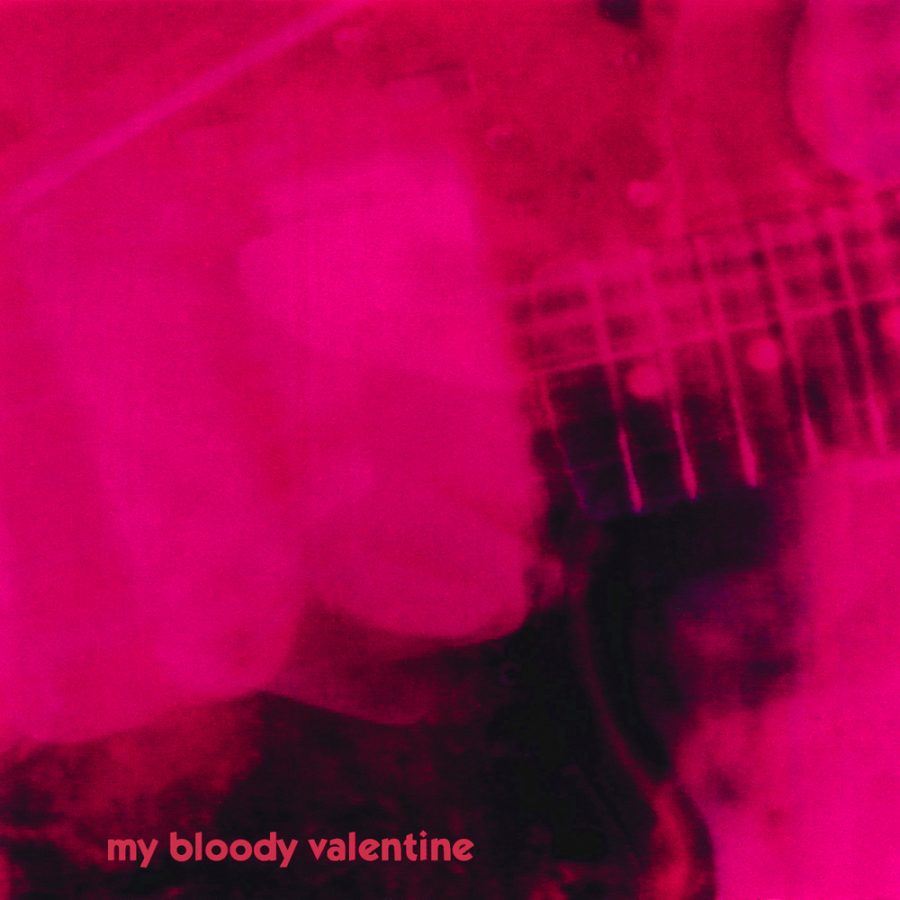“Loveless” at 30: MBV Still Has Us Gazing at Our Shoes
An influential experimental rock album turns 30.
November 14, 2021
“Ten.” “Metallica.” “Nevermind.” All of these albums have turned 30 this year, and they are still loved by critics and the public alike. But as great and insanely popular as those LPs are, there’s one rock album celebrating its 30th anniversary that deserves more attention. That album is “Loveless” by the Irish-English band My Bloody Valentine.
If you’re wondering why My Bloody Valentine, also known as “MBV,” doesn’t get nearly as much recognition as Pearl Jam or Red Hot Chili Peppers, it’s probably because they were never the sort of band to want commercial success. Their unique blend of sleepy vocals and disorienting guitars connected to armies of effects pedals became known as shoegazing, a term that stemmed from watching performers look down at their pedals while singing. It was this musical style of My Bloody Valentine that embodied a considerable portion of early 90s indie rock, especially in the U.K.
There may have been other bands that released material before “Loveless,” such as Ride, Lush and Pale Saints, but My Bloody Valentine were the ones who planted the seeds of the subgenre with their 1988 debut, “Isn’t Anything.” Yet for as revolutionary as their debut was, it was more like a rough blueprint for what was to come. The years that followed found guitarist Kevin Shields experimenting even further, meticulously crafting his band’s sounds until he was satisfied with them. It took two years for Shields and the rest of the band to record the final product, and, unsurprisingly, it came close to bankrupting their label, Creation. Much of the innovative production techniques involved digital manipulation. Still, the recording process was mostly done on analog tape, making for an enticing combination of both past and future sounds.
With “Loveless,” it was all about the sonic landscapes that MBV were capable of creating. Not to overshadow their terse lyrical messages, but with this being the quintessential shoegazing album, the guitars are amplified, distorted and treated with various effects. In this case, the most prominent effects are reverse reverb, fuzz and tremolo, the latter of which can be heard on full display in the album’s opening cut “Only Shallow.” Additionally, Shields’s idiosyncratic guitar playing led to a one-of-a-kind technique known as “glide guitar,” a wavering electric vibrato heard on the seven-minute closer “Soon.”
The end result of experimenting with all of these techniques was more than just a great shoegaze album; it was a glorious artistic statement among any genre of music. Commercially speaking, you would never guess “Loveless” had such a significant impact on rock music, but it received unanimous critical praise at the time of its release, and it has only aged more strongly over the last three decades. It’s amazing to hear all the different textures of this album imitated by popular alternative rock groups, such as The Smashing Pumpkins, Oasis, Deftones, M83 and Coldplay. Artists including Robert Smith (The Cure) and Trent Reznor (Nine Inch Nails) have referred to it as inspirational. Even in the music from up-and-coming artists, it’s hard to deny the influence songs like “To Here Knows When” and “Come in Alone” have had on their heavenly atmospheres.
“Loveless” is considered by many to be the embodiment of shoegazing, but it sadly became a death knell for the movement as well. After its release, every shoegaze album would be overshadowed by it. Even My Bloody Valentine wouldn’t release another studio album for 22 years. Thus, the shoegaze movement faded away within the next few years, and while most other albums within the subgenre have unfortunately been forgotten, “Loveless” remains a pinnacle of pop culture. Even after 30 years, MBV still has us gazing at our shoes.


















